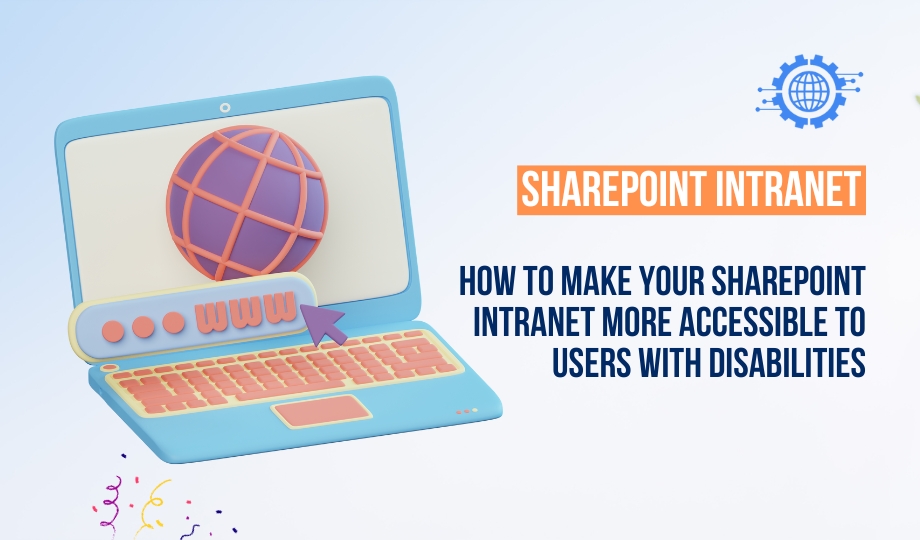Here are some tips on how to make your SharePoint intranet more accessible to users with disabilities:
Use the built-in accessibility features. SharePoint includes a number of built-in accessibility features that make it easier for users with disabilities to use. These features include:
Keyboard navigation: All SharePoint elements can be navigated using the keyboard. This is important for users who cannot use a mouse.
Screen reader support: SharePoint supports screen readers, which allow users who are blind or have low vision to access content.
High contrast mode: SharePoint has a high contrast mode that makes it easier for users with visual impairments to read content.
Use accessible design principles. When creating and designing your intranet, follow accessible design principles. This means using colors and fonts that are easy to read, and using layouts that are easy to understand.
Provide alternative text for images. Alternative text is a description of an image that is read by screen readers. When adding images to your intranet, be sure to provide alternative text for each image.
Use descriptive links. When creating links, be sure to use descriptive text for the link text. This will help users to understand where the link will take them before they click on it.
Avoid using tables for layout. Tables can be difficult for users with disabilities to use. Avoid using tables for layout, and instead use CSS to layout your content.
Test your intranet for accessibility. Once you have created your intranet, be sure to test it for accessibility using a variety of tools and methods. This will help to ensure that your intranet is accessible to all users.
Here are some additional tips:
Use color sparingly and thoughtfully. Avoid using color combinations that are difficult to read, such as red and green. If you do use color, be sure to provide sufficient contrast between the text and background colors.
Use large fonts and line spacing. Large fonts and line spacing make content easier to read, especially for users with visual impairments.
Avoid using animations and flashing images. Animations and flashing images can be disorienting for users with disabilities.
Provide captions and transcripts for videos. Captions and transcripts make videos accessible to users who are deaf or hard of hearing.
Use a consistent navigation scheme. A consistent navigation scheme makes it easier for users to find the information they need.
By following these tips, you can make your SharePoint intranet more accessible to users with disabilities.
Here are some examples of how you can make your SharePoint intranet more accessible:
- Add alternative text to all images.
- Use descriptive link text.
- Avoid using tables for layout.
- Use large fonts and line spacing.
- Avoid using animations and flashing images.
- Provide captions and transcripts for videos.
- Use a consistent navigation scheme.
By making these small changes, you can make a big difference in the accessibility of your SharePoint intranet.

